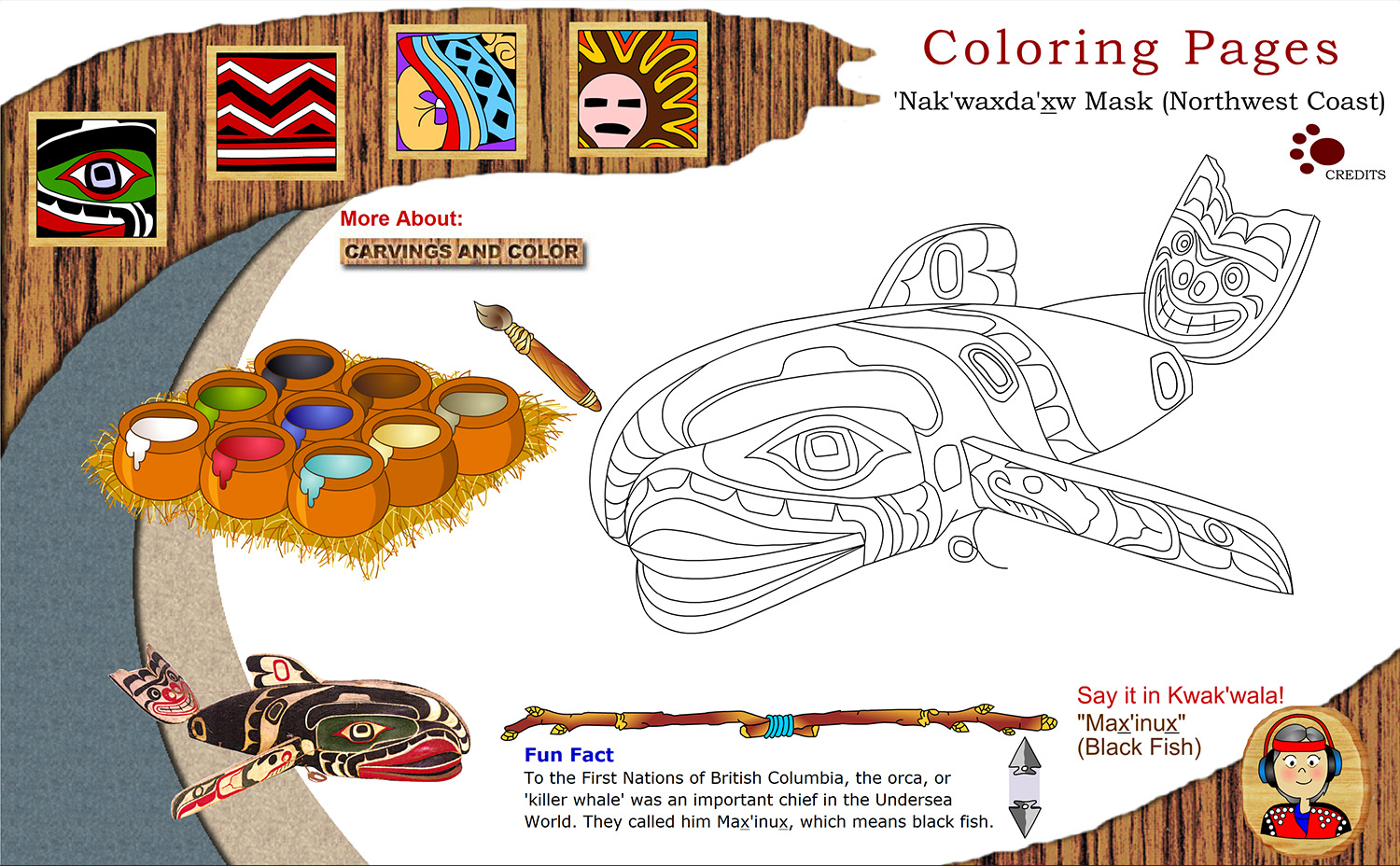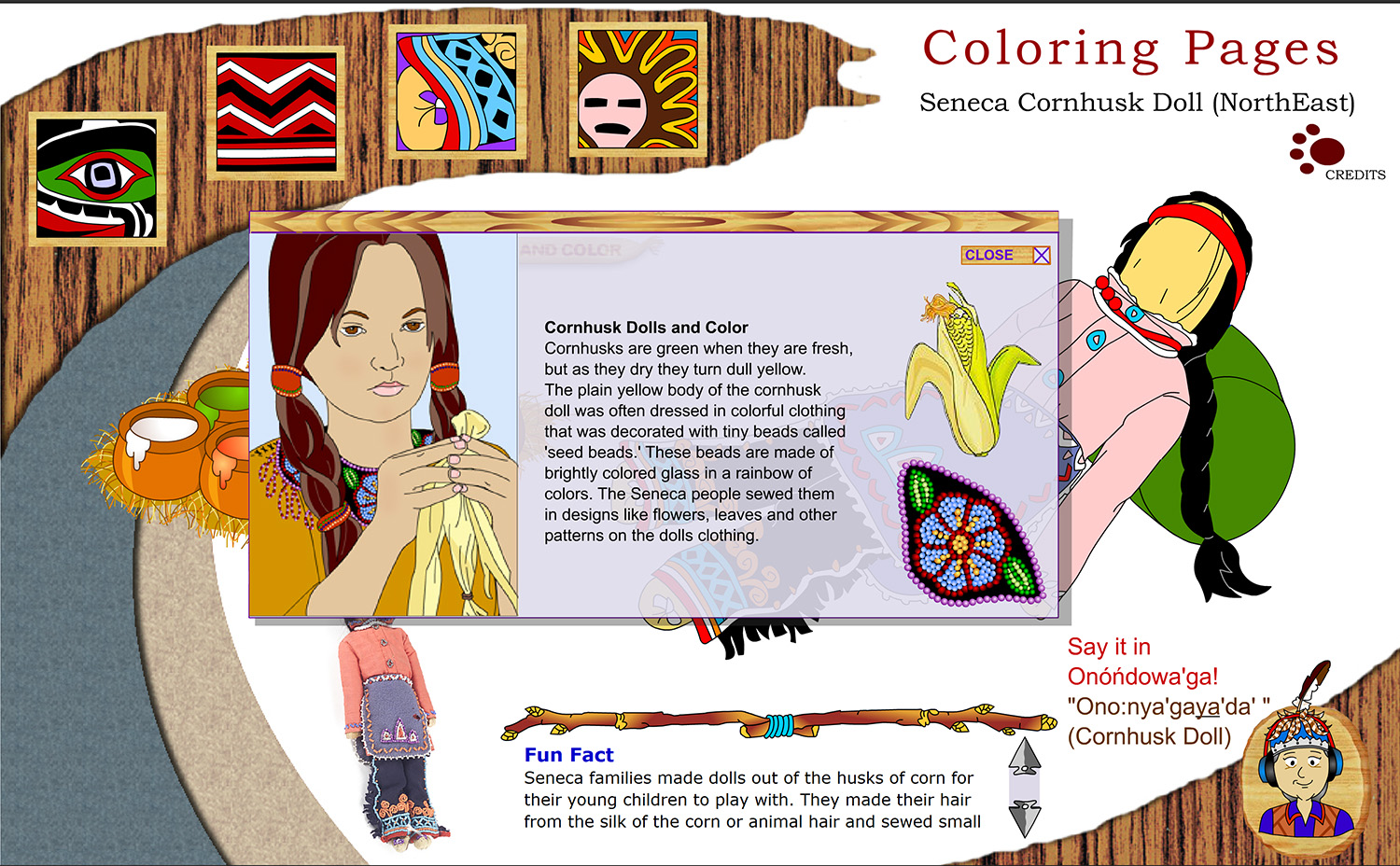Smithsonian Interactive Display
Project role: Product Design, Multimedia Design and Development
Primary tools: Illustrator, Photoshop, Audition, Flash

Overview: At the Smithsonian Institution's National Museum of the American Indian (NMAI), I had the opportunity to contribute to the museum’s mission of preserving and sharing indigenous cultures. I proposed and developed an interactive display for the Cultural Resource Center (CRC), designed to engage children and families in learning about indigenous history and traditions through an immersive multimedia experience. This project satisfied the center's mission to engage young visitors while deepening their understanding of indigenous cultures.
Process: I first scoped a project plan and proposal. I then scoped out the existing equipment and identified software needs for the interactive display. I created a content plan through collaboration with museum curators and tribal elders, to ensure cultural accuracy and depth. I then created initial sketches and gathered feedback from a focus group of children who frequented the CRC. This feedback shaped the design and content to ensure it was both engaging and accessible for young users. Once approved by museum stakeholders, the display was created. I then worked with museum staff to select a location that would not disrupt foot traffic and collaborated on the installation of a dedicated area equipped with PCs, headphones, and seating for children and parents. I then utilized a multimedia authoring tool along with graphic design and audio-visual software to develop the entire interactive experience. The display included original illustrations, scripted content, and audio snippets, featuring recordings of native speakers of endangered languages. Tribal stakeholders were consulted and gave approvals for the depiction of sacred objects in the display.
Results: The interactive display was a success, providing children and their families with a fun, educational, and immersive way to engage with indigenous cultures. It enhanced the CRC’s mission of cultural preservation by making it accessible and meaningful to younger audiences. The project received positive feedback from museum visitors and stakeholders, contributing to the museum’s outreach and educational efforts.

